How Ripe Olives are Grown in California
Here in California, we know a thing or two about how Ripe Olives are grown. Ripe Olives from the Golden State have a unique flavor unlike any other olives on the market. They are packed with antioxidants, vitamins, and minerals, which make them a healthy and delicious addition to your diet.

Are olives a fruit or vegetable?
This may come as a surprise, but olives are a fruit because they come from the flower of the olive tree.
Where are California Ripe Olives grown?
California Ripe Olives are grown on family farms in the inland valleys of California. The biggest growing regions are Tulare County in the San Joaquin Valley, and Glenn and Tehama Counties in the northern Sacramento Valley.

How are California Ripe Olives Grown?
We recently had the pleasure of meeting up with Giulio Zavolta and Rachelle Bross of Olivaia. They are a grower of California Ripe Olives in the Lindsay area, formerly known as the ‘olive capital of the world’. They are also small-batch producers of estate extra virgin olive oil (EVOO).
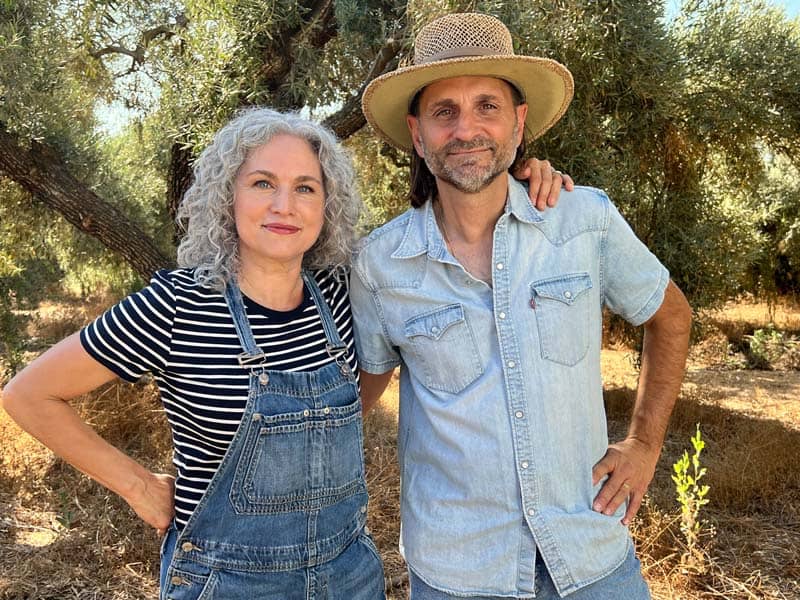
We asked Giulio to walk us through what a growing season and harvest looks like on his family’s ranch.
The process of preparing California Ripe Olive trees for the growing season starts in spring when the weather is a little warmer.
How the olive trees are prepared for the season.
To prepare the trees for the long growing season ahead Giulio starts with heavy pruning. The materials that are removed from the trees during pruning are recycled when they are shredded and spread across the ground in the orchard.
Giulio’s 2-step fertilization process.
After pruning, the trees are given an immediate boost of energy with a large dose of organic fertilizer that is added right through the irrigation system. In Giulio’s case, his farm uses an all-natural, organic fertilizer mostly made up of organic compost mixed with gypsum, which helps with water penetration into the ground.

Nothing goes to waste on this ranch!
Giulio then adds a second round of natural fertilizers that includes the organic waste from Olivaia’s extra virgin olive oil-making process.
All of the flesh and pits rejected from the olive oil-making process are saved and then mixed with other organic materials. This mixture is then spread across the entire ranch and acts as a slow fertilizer that breaks down and adds nutrients back into the earth over time.
The next few months are dedicated to tending to the irrigation in what Giulio calls “a song and dance with the trees and water”.
Water is essential to the growing process, although olives don’t require as much of it as some other crops. Without the right amount of water, the tree will not grow those nostalgic plump, round, California Ripe Olives that fit on the ends of our fingertips.
Since water is such a scarce commodity, Giulio has to be very vigilant about how and when he irrigates. He also has to closely monitor the amount of water that is used throughout the season.
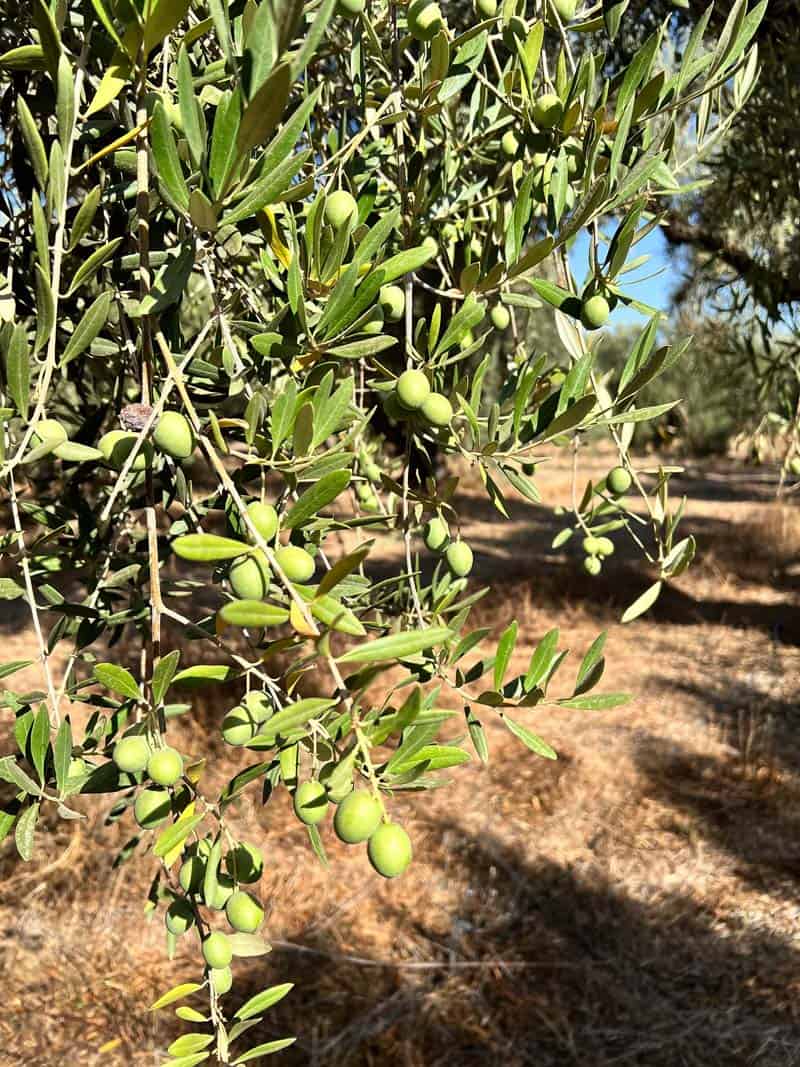
How to tell if California Ripe Olives are ready to harvest.
Once September rolls around, Giulio starts monitoring the color of the olives that are growing on his trees. When a few of the olives start to change from vibrant green to a color more reminiscent of straw, the olives are ready to be picked.
Giulio says, “The straw-like color isn’t necessarily an indication of ripeness. The olive is ripe when that color is present, but for the California Ripe Olive, the perfect moment for harvesting is actually just prior to the olive turning color.” The olive ripening process has a very short window, only a few weeks. Diligence in monitoring for the first few olives to begin changing color on the tree is key.
How are California Ripe Olives harvested?
Once Giulio and his team have identified that it is time to harvest the ripe olives. Each olive is carefully hand-picked so that they are not bruised during harvesting. At the end of each harvest day, all of the olives are sent to a processing plant that is close to the ranch in Lindsay, Ca.
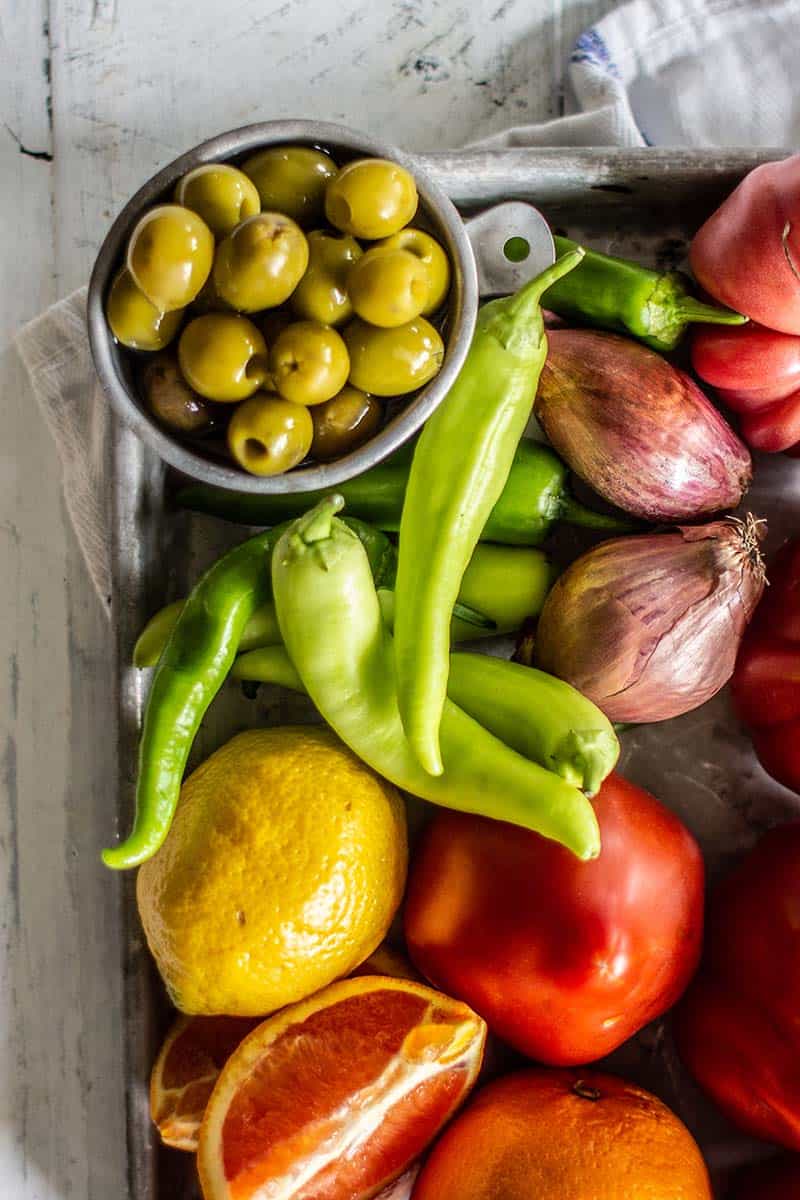
How are California Ripe Olives processed?
Within 24-48 hours the olives are shipped to Musco Olives in Tracy, California. They are the largest olive processor in the state. Immediately, they sort the olives and then run them through their proprietary processing method.
Then the olives are cured, and shortly after the canning process begins before the olives are distributed across the United States and around the world.
How long does the Ripe Olive harvest season last?
Because nature plays the most important role, timing can vary. Generally, harvest season begins in September and is completed in November.

How can you tell if you are purchasing California Ripe Olives at the store?
It is easier than ever to know if you are purchasing olives from California. Simply look for the blue and yellow California Grown license plate right on the label of the cans in your store.

Why should you choose California Grown?
California Grown is all about connecting consumers with the people who grow and produce their food.
Farmers have a lot of stories to tell and want to welcome you into their fields so you can really understand where your food comes from – and how important you are to the process.
You may not think of farmers every time you’re in the grocery store, but they think about you an awful lot.
When you make the choice to purchase a product with the California Grown license plate, you are choosing to support California farmers and farm workers.


Want to learn more about Olivaia Ranch?
“As a consumer, it’s important to understand where your food comes from. How it’s grown, who is picking your food, and what the environment is like when they are picking it. Are they are getting a fair wage? Are they being treated as honorably as they deserve to be treated?
It’s an important part of how we should all be making decisions about how we purchase food.” -Rachelle Bross
Photo courtesy Olivaia Ranch.
Dig deeper into the history of Olivaia Ranch and learn more about the farmers by clicking here.
Looking for recipes made with California Ripe Olives? Keep scrolling!
Our California Grown Creators have been busy creating delicious recipes that feature all sorts of commodities, like olives. Below you will find a few exceptional Ripe Olive recipes that we know you will love!
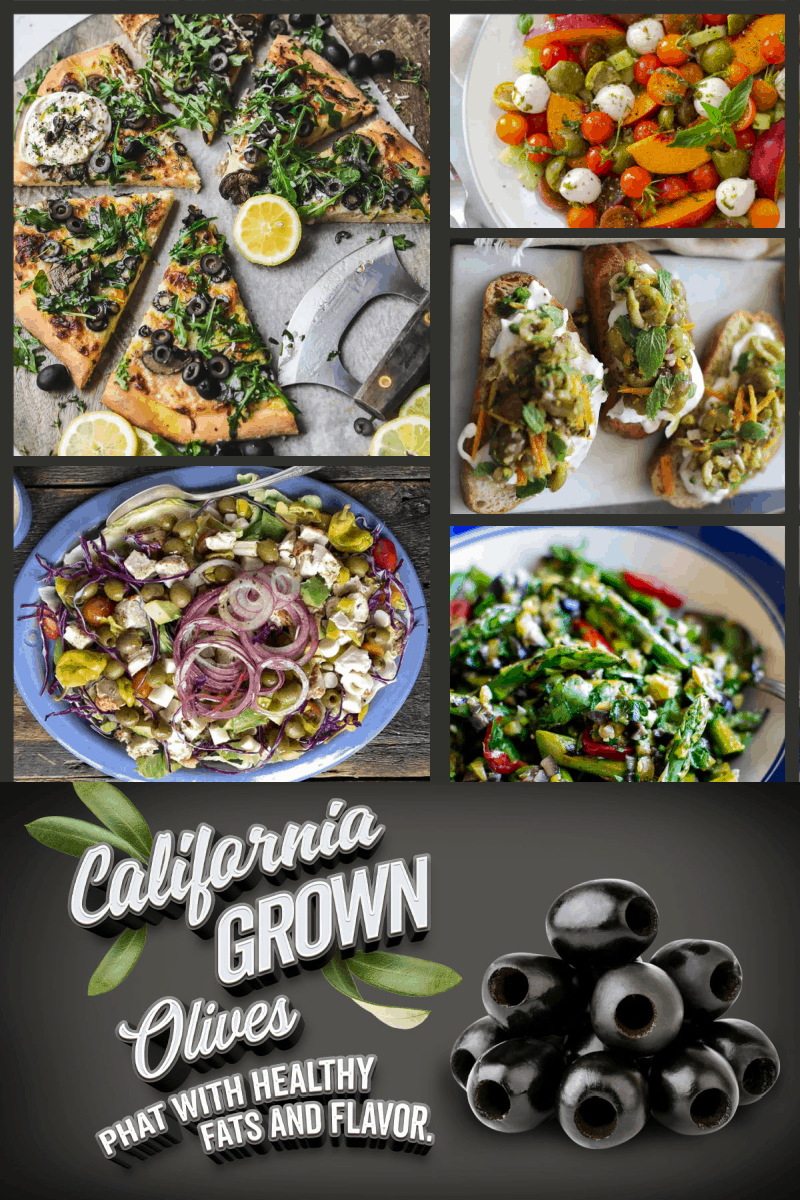
Our Best Olive Recipes and What You Should Know About Olives!
Did you know California grows 95% of the nation’s olive crop? It’s true!
Hundreds of farm families scattered throughout California’s inland valleys proudly grow the vast majority of the state’s crop. The fertile soils, warm days, and cool nights provide an ideal place to grow premium quality olives.
Click here for our favorite recipes with ripe olives!
Blood Orange Olive and Shallot Focaccia
This stunning focaccia from Baking the Goods shines with bright citrus, earthy depth & a salty finish in a rich & airy bread with a crisp crust.
Click here to try this recipe for yourself!


Oven Baked Paella with Artichoke Hearts and Seasonal Veg
This simple Paella recipe from This Mess is Ours comes together quickly and easily! It’s super customizable too meaning you can repurpose the bits and bobs in your crisper drawer and still be met with rave reviews simultaneously.
Click here to try this recipe for yourself!
Lemon Garlic Butter Pasta with Olives
This pasta recipe is easy to make and even easier to eat!
You’ll love the bright, zesty lemon paired with briny olives and a crunchy panko topping. This delicious recipe by Jerry James Stone is both light and rich and is perfect for a fast weeknight dinner.
Don’t forget to serve it with a glass of California Chardonnay!
Click here to try this recipe for yourself!


Spicy Marinated Olives
Hola Jalapeno’s quick recipe for Spicy Marinated Olives is an easy appetizer with pan-roasted cloves of garlic, arbol chiles, and loads of fresh herbs. Serve warm or room temperature.
Click here to try this recipe for yourself!
This article was written by Meg van der Kruik. Photos from the ranch were taken by Meg van der Kruik. In-store photo credit James Collier for California Grown.

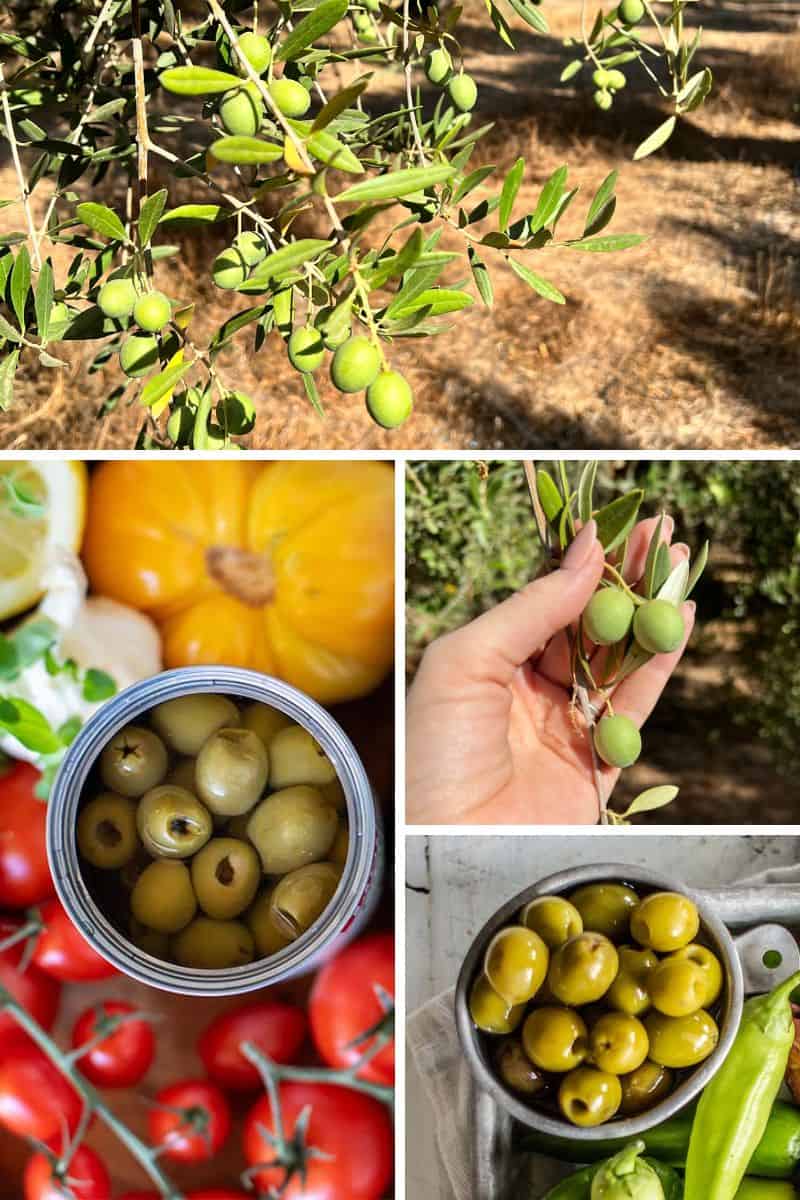
What is good to use to get rid of insects that lay eggs and their larva grow in the olives?
I like your web site. Because me and my family love olives. We go through several jars a month.
That is a great question James, you would need to ask an olive farmer directly as methods vary from olive grove to olive grove. So glad your family loves olives as much as we do!
Hello
I want to buy raw olives for kids in school, to show them how we make olive-oil
we are facing an important holiday called the Tu-Bishvat Holiday of the Trees
do you have, please?
it is possible to donate the olives, please?
thank you
Hi Moshe, we aren’t actually affiliated with any olive growers, we just wrote an article about how ripe olives are grown. You will need to reach out to a grower directly.